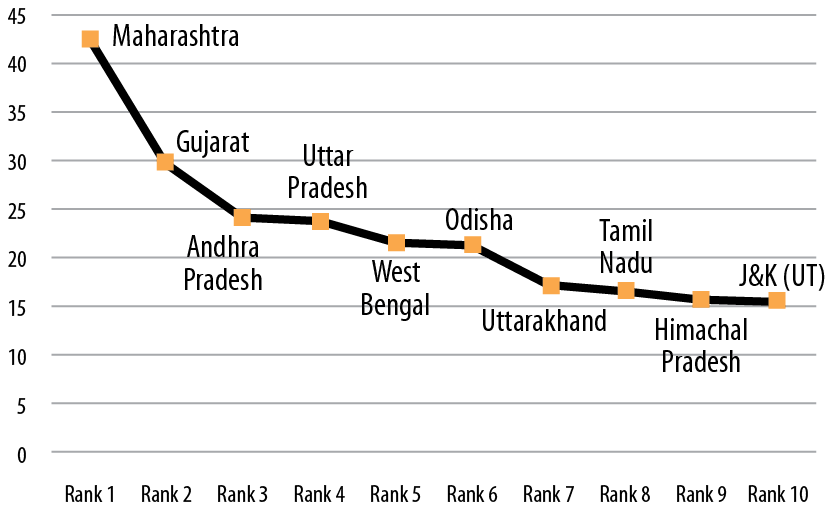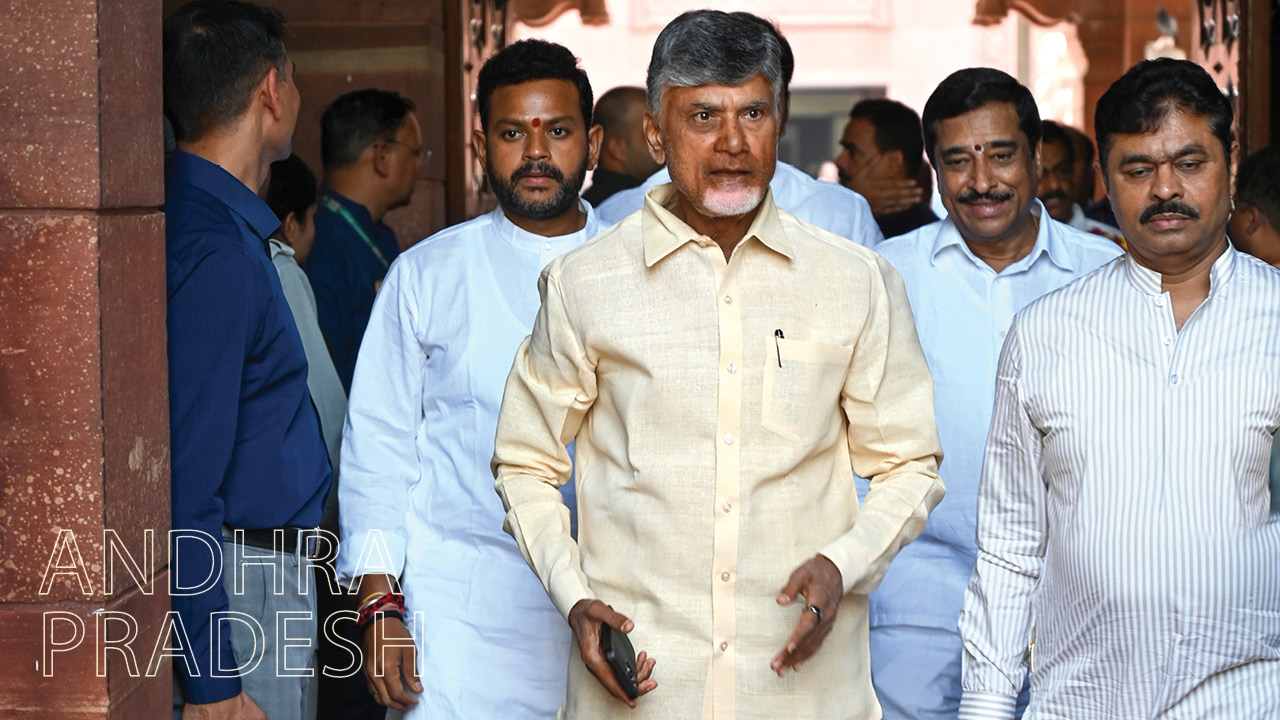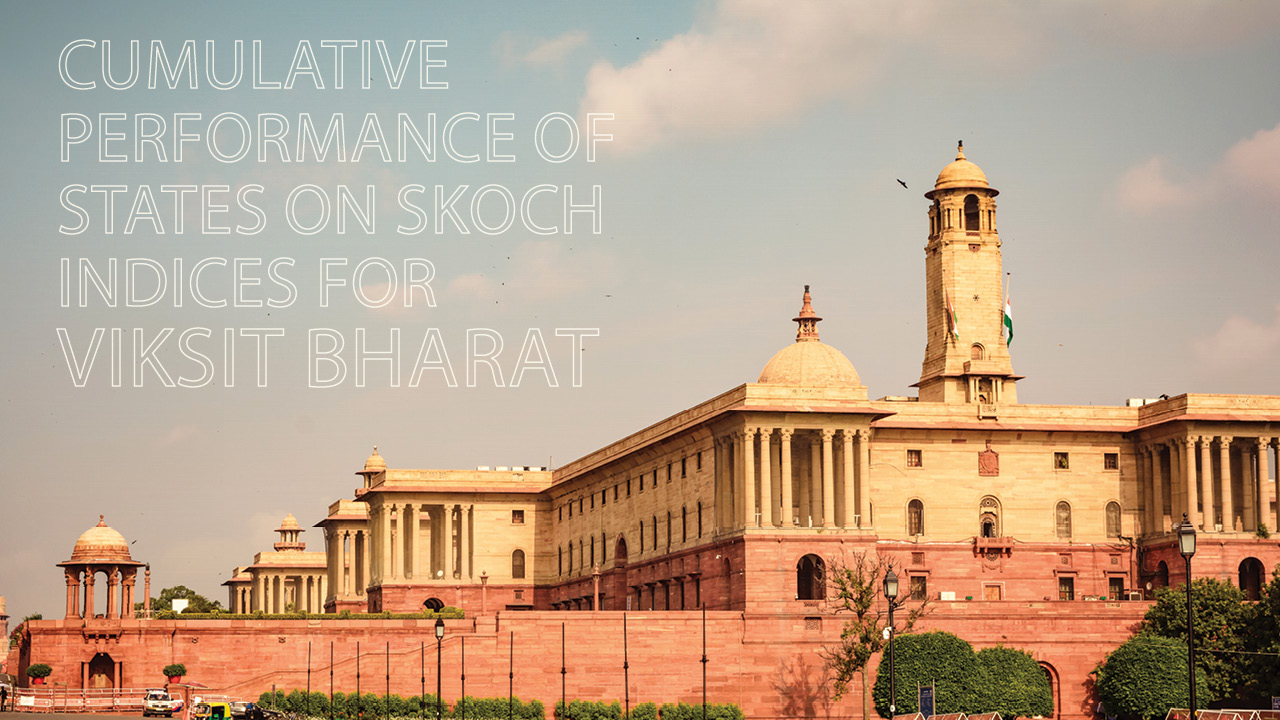Andhra Pradesh continues to distinguish itself as a governance frontrunner in India, exhibiting robust, multidimensional performance across key development indicators. Under the SKOCH State of Development Index 2024, Andhra Pradesh has positioned itself among the top-performing states, reflecting both administrative dynamism and a steady commitment to inclusive, effective governance. The state’s relative performance across the six SKOCH indices—Governance, e-Government Infrastructure Index, Finance, Government Transformation, Efficiency, and Development—provides a nuanced picture of its strengths and areas of improvement.
Andhra Pradesh ranks third in the State of Governance Index, underscoring its administrative consistency and reform orientation. It is placed 26th in the State of e-Government Infrastructure Index, revealing significant room for growth in digital inclusion and service penetration. On the State of Financial Prudence Index, Andhra Pradesh ranks 17th, indicating mid-level performance with evident fiscal stress but also targeted improvement in capital outlays. The state performs well in composite indices—ranking 9th in Government Transformation, 3rd in Efficiency, and 9th in Development—demonstrating how governance strength and targeted fiscal efforts compensate for digital weaknesses.
A comparative look with peer states such as Maharashtra and Gujarat reveals that Andhra Pradesh holds its ground in terms of policy innovation, institutional delivery, and impactful sectoral programmes. While Maharashtra leads through comprehensive, balanced excellence across all indices, and Gujarat shows strong fiscal and digital integration, Andhra Pradesh excels through its governance-first model. This model, built on high-impact projects and institutional responsiveness, sustains Andhra Pradesh’s top-three rank in governance, but its lag in digital infrastructure and fiscal constraints prevents it from fully translating administrative dynamism into all-round development leadership.
Figure 1: Governance Score of Top 10 States 2024

The evolution of Andhra Pradesh’s governance capabilities over the last decade is noteworthy. From a modest 13th place in 2015, the state rose to first place in both 2020 and 2021. Although it slipped to fourth in 2022, it stabilised at third position in 2023 and 2024. This trajectory reflects a rapid phase of reform followed by a period of consolidation. The 2024 SKOCH evaluation noted 29 well-performing projects, with four deemed highly impactful and eleven categorised as impactful. These projects span key public service sectors, indicating the state’s focus on governance as a vehicle for structural transformation.
Andhra Pradesh’s sectoral strengths are clearly pronounced. In 2024, it ranked first nationally in Finance, Power & Energy, and Environment—sectors crucial to both economic and ecological sustainability. Municipal Governance and Power & Energy contributed the highest number of impactful projects, reflecting the government’s long-standing emphasis on infrastructure, urban management, and energy transition. The state also made visible recoveries in sectors like Horticulture, Sanitation, e-Governance, General Administration, Transport, and Water Governance. These “comeback sectors” signal adaptive policymaking and strategic reallocation of resources based on performance feedback. As evident from the surge in project density in these areas, Andhra Pradesh has been agile in re-prioritising sectors to align with citizen needs and administrative capacity.
Despite its remarkable sectoral achievements, Andhra Pradesh faces structural constraints, particularly on the fiscal and digital fronts. The state’s placement at 17th in the Finance Index reveals a dual challenge: while Andhra Pradesh has demonstrated capital expenditure efficiency, it remains plagued by high fiscal deficits, narrow revenue base, and a rising debt burden. According to the NITI Aayog Fiscal Health Index 2025, the state is categorised under the ‘aspirational’ category, with pressing concerns about revenue generation and long-term sustainability. The SKOCH Finance Index shows Andhra Pradesh performing well in development and capital expenditure but lagging in own-tax and non-tax revenue mobilisation. To consolidate its development gains, the state must prioritise fiscal prudence, debt restructuring, and diversification of revenue streams.
Equally pressing is the challenge of digital infrastructure and service delivery. Ranked 26th on the e-Government Infrastructure Index, Andhra Pradesh lags behind in key digital metrics such as internet penetration, telecom density, and e-transaction per capita. While the state has pioneered platforms like GST Mithra, RSAT, Unified Ticketing Systems, and Spandana, their impact remains localised rather than system-wide. Without deeper penetration of these services and higher integration across departments and districts, the benefits of digital public goods will remain uneven. Therefore, expanding access to digital infrastructure and improving user adoption across rural and urban geographies is a critical task.
The state’s exemplary project pipeline, however, illustrates its institutional capacity and innovation potential. The e-LARRM platform, utilising blockchain and Aadhaar integration for land acquisition, has streamlined processes and improved legal compliance. GST Mithra and RSAT have digitised the tax ecosystem, enabling automated return scrutiny and boosting compliance. These systems reflect a shift toward data-driven, transparent governance. The Spandana grievance redressal platform, operational since 2021, integrates 32 departments and has achieved a 94.4% resolution rate—showcasing a people-centric administrative ethos.
Several other projects also demonstrate high impact and scalability. The Bangarukonda initiative addresses child malnutrition through a community-volunteer model, successfully reversing malnutrition in hundreds of cases. The Ananthapuramu and Kurnool Solar Parks, together contributing 2500 MW of renewable energy, represent strategic investments in green infrastructure, job creation, and CO reduction. Education and skilling are supported by the Malaviya Mission on Teachers and Teaching (MMTTC), aligned with NEP 2020, offering industry collaboration, faculty training, and assured placements. The Automatic Vendor Online E-Payment System under APGENCO has drastically improved vendor satisfaction and payment timelines. Meanwhile, the Online Waste Exchange Portal (APEMCL), India’s first such digital platform, handles hazardous waste for 3,500 industries, integrating QR-based tracking and real-time monitoring to promote a circular economy.
Andhra Pradesh’s transport digitisation through Unified Ticketing Solutions (UTS) for APSRTC has modernised bookings and enabled paperless, QR-based travel, significantly enhancing passenger convenience. Similarly, the Return Scrutiny Automation Tool (RSAT) has enabled the state to scale GST scrutiny with accuracy, resulting in ₹293.5 crore in tax recovery and being considered for national adoption. In energy management, the APPCC’s Joint Meter Reading (JMR) system integrated with SAP has transformed energy accounting and enabled faster financial settlements.
The state has also shown deep social sensitivity through the Resettlement and Rehabilitation of Ex-Servicemen programme, which offers employment, skilling, and legal assistance. Over 500 individuals have been placed in jobs and more than 1,200 supported in higher education, marking a dignified civilian transition for veterans. The expansion plans under APEXCO point to institutionalisation of this support model.
Agriculture and sustainability receive significant attention. The Centre of Excellence for Flowers and Vegetables in Kuppam has promoted hybrid farming techniques, improved yields, and empowered over 14,000 farmers through training and income diversification. Under the National Mission on Edible Oil–Oil Palm, Andhra Pradesh contributes 84% of national crude palm oil production, benefiting 1.74 lakh farmers. Its future expansion plan aims to reach 3.45 lakh hectares by 2030, further boosting rural incomes and reducing import dependency.
Looking ahead to 2025, Andhra Pradesh has the potential to evolve from a governance leader to a comprehensive development champion. This requires focusing on universal digital access, strengthening state finances, and embedding project-driven governance deeper into the district and grassroots levels. The state’s policy DNA, evident in its flagship projects, offers a replicable model for other Indian states. With the right structural course corrections, Andhra Pradesh can set a national benchmark not just in governance excellence, but in holistic, inclusive, and sustainable development.
Taken together, Andhra Pradesh’s state profile under the SKOCH Development Index reveals a story of dynamic governance, strategic prioritisation, and strong institutional innovation. Its consistent top-three ranking in governance stems from deep institutional investments, proactive policymaking, and results-driven administration. However, to rise further in the composite indices of transformation and development, Andhra Pradesh must bridge the digital divide, address fiscal vulnerabilities, and ensure broader participation from districts and marginalised geographies.



